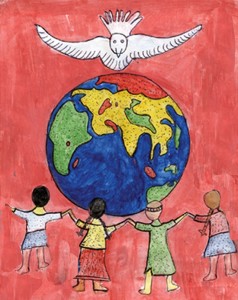6.4 Lesson Three – Rules in society
Time required: 60 minutes
Materials required: chart paper, marker pens, art utensils, art paper
Teacher instructions:
The teacher invites the students to name and comment on rules found within society, particularly rules that affect the lives of the students. These rules are recorded on chart paper under the title, “Rules in Society.” The term, “Society”, here refers to one or more of the following: school, local community, local municipality, county, state, province or nation.
Some rules which may emerge in the brainstorm process:
- Bike helmet regulations
 Drinking and driving regulations
Drinking and driving regulations- Age restrictions on driving an automobile
- Age restrictions on voting in elections
- Age restrictions on smoking and drinking
- Regulations about physical contact on school property
- Age restrictions at movie theatres
- School policy on bullying
- Traffic light and stop-sign regulations
- Rules on being quiet in libraries
- Height restrictions in amusement parks
- Restrictions on access to content on the Internet
When the list is completed, the teacher stimulates discussion about the list and its content.
Art activity
The students are divided into groups of three. Each group develops an art creation that demonstrates the value of a given rule in society, for example, a school policy of anti-bullying or bike helmet regulations in the local municipality. The art creation can take a variety of forms including poetry, drawing, skit, song, dance and musical rap.
Each group performs or displays their art creation which, with the support of the teacher, will provoke discussion within the larger class.
Homework assignment
The students are assigned to choose an article from a local or regional newspaper (or from an Internet news source) that involves a conflict between two or more people or two or more groups. After having studied the article, the students are required to write a one-page reflection that addresses the following questions:
- Where does the story take place?
- Who are the parties involved?
- What issue or issues are at play in this situation? Explain.
- At the heart of this conflict, has there been a violation of society’s rules? Explain.
- Would this conflict have occurred if one, both or all parties involved had followed society’s rules? Explain.
The students should be prepared to present or discuss the content of their paper in a subsequent class.
Journal activity: Let’s write about it!
For journal questions to stimulate the students’ written reflections after or during class, see Appendix 2.
